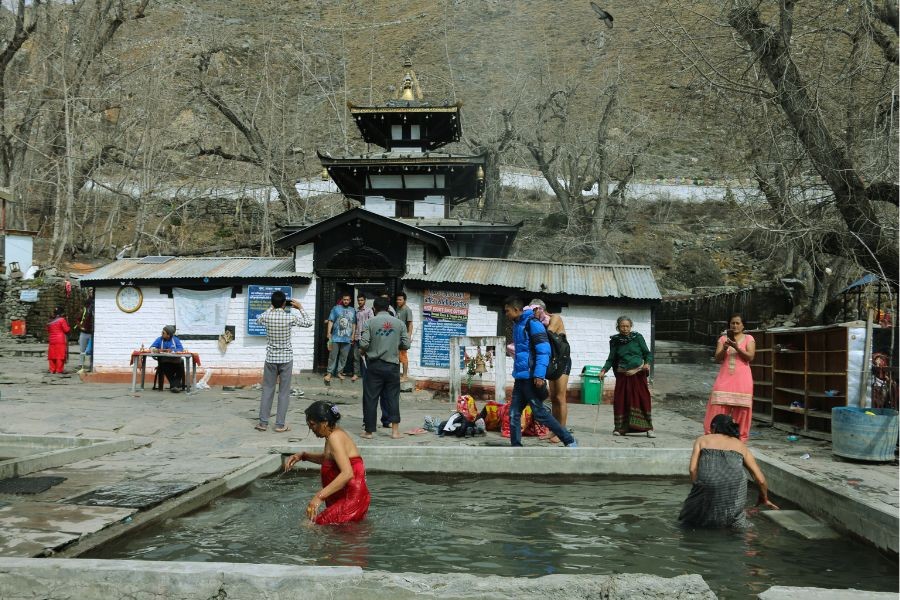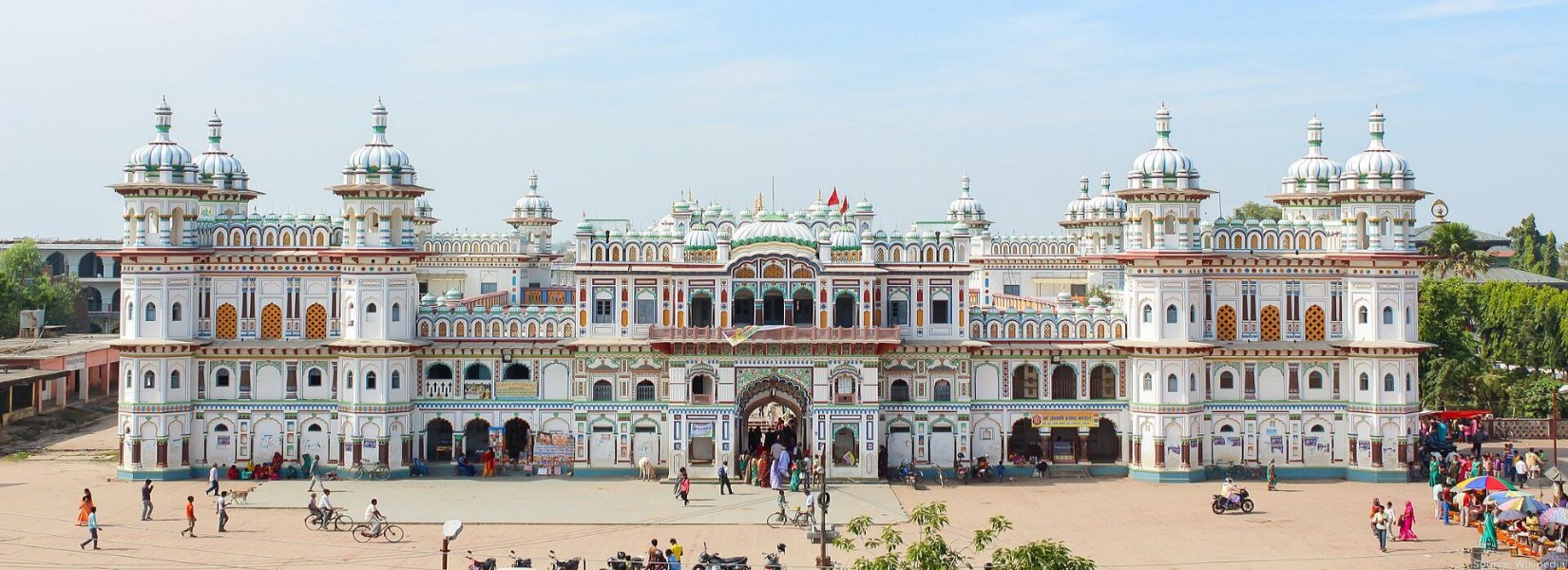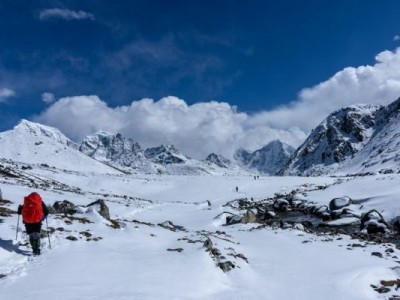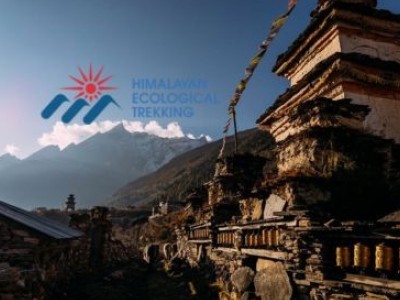Nepal, often called the land of temples and spirituality, offers numerous sacred destinations beyond its capital city. These top 12 pilgrimage sites outside Kathmandu Valley attract thousands of devotees and travelers seeking spiritual enlightenment amidst breathtaking landscapes. From Hindu temples to Buddhist monasteries, these sacred places in Nepal highlight the nation's rich cultural legacy and spiritual importance.
Table of Contents
Why Explore Pilgrimage Sites Outside Kathmandu Valley?
Nepal's religious landscape extends far beyond Kathmandu Valley, with ancient temples and sacred places scattered throughout the country. These pilgrimage sites combine spiritual significance with natural beauty, offering visitors a chance to experience Nepal's diverse religious traditions while enjoying stunning mountain views, serene lakes, and peaceful surroundings.
Many of these destinations also serve as popular sightseeing spots outside Kathmandu Valley, allowing travelers to combine spiritual journeys with adventure and exploration. Some locations even offer pilgrimage trekking routes that take you through breathtaking Himalayan landscapes while visiting sacred sites.
The Most Popular Pilgrimage Sites Outside Kathmandu Valley
1. Lumbini Pilgrimage Site – Birthplace of Lord Buddha
.jpg)
Situated in Nepal's Rupandehi District, Lumbini is arguably the most important Buddhist pilgrimage location globally. This UNESCO World Heritage Site signifies where Siddhartha Gautama was born, who later became the Buddha, the creator of Buddhism.
The main draw is the Maya Devi Temple, constructed precisely where Queen Maya Devi delivered Prince Siddhartha. Inside the temple, visitors can see the marker stone indicating the precise birthplace and the famous Ashoka Pillar, erected by Emperor Ashoka in 249 BCE.
The sacred garden in Lumbini contains various monasteries built by different Buddhist nations, reflecting diverse architectural styles. The peaceful ambiance, serene ponds, and ancient ruins make it a place of deep spiritual reflection and connection for people of all faiths.
Best time to visit: October to March, when the weather is pleasant and clear.
2. Muktinath Temple – Sacred to Both Hindus and Buddhists

Situated at an altitude of 3,710 meters in the Mustang District, Muktinath is one of the most popular pilgrimage sites outside Kathmandu for both Hindus and Buddhists. For Hindus, it is referred to as Mukti Kshetra (site of liberation), whereas Buddhists name it Chumig Gyatsa (hundred waters).
The main temple houses a self-manifested eternal flame burning alongside a natural spring, symbolizing the coexistence of water and fire. One of the highlights is the 108 water spouts arranged in a semicircle, where pilgrims perform ritual bathing in the freezing water to wash away their sins.
Approximately one hundred meters to the south of the temple, different gods and goddesses are enshrined. The site provides lodging for visitors at Dharmashala and Maharani Pouwa (resting places for pilgrims). The journey to Muktinath offers one of the best pilgrimage trekking routes in Nepal, taking visitors through the spectacular Annapurna region with views of snow-capped mountains and the world's deepest gorge, Kali Gandaki.
Best time to visit: March to May and September to November, avoiding the monsoon and winter seasons.
3. Janakpur Temple (Janaki Mandir) – Birthplace of Goddess Sita
The Janakpur Temple, located in the town of Janakpur in southeastern Nepal, is a highly revered pilgrimage site for Hindus. Dedicated to Goddess Sita, it is believed to be the birthplace of this divine figure, the wife of Lord Rama, and marks the capital of the ancient kingdom of Mithila.
The temple's architecture is impressive, featuring three stories and 60 rooms, all constructed in bright white with intricate carvings and ornate decorations. Constructed in 1911, combining Mughal and regional architectural styles, it is frequently referred to as the "Naulakha Mandir" due to its nine lakh rupees construction cost.
The temple is surrounded by a peaceful garden and sacred ponds, including Dhanush Sagar and Ganga Sagar, offering a serene atmosphere for visitors to reflect and pray. Janakpur comes alive during Vivah Panchami, a festival celebrating the wedding of Sita and Ram, attracting thousands of pilgrims from Nepal and India.
Best time to visit: November to February, especially during the Vivah Panchami festival (November-December).
4. Gosainkunda – The Holy Lake of Lord Shiva
The revered lake of Gosainkunda, located at an elevation of 4,380 meters above sea level in the Rasuwa District, is one of Nepal's most renowned pilgrimage sites. Surrounded by higher terrain towards the east and north, this kunda or lake is both grand and picturesque.
According to Hindu mythology, Lord Shiva created the lake when he thrust his trident into the mountain to extract water to cool his throat after swallowing poison. On the east and west of Gosainkunda, there are nine other lakes, including Saraswatikunda, Bhairavkunda, Sooryakunda, and Ganeshkunda.
Each year in August during Janai Poornima, thousands of Hindu worshippers and pilgrims hike to this location to bathe in the icy waters and take part in the festival. The trek to Gosainkunda takes visitors through Langtang National Park with stunning Himalayan landscapes, lush forests, and traditional Tamang villages, making it one of the best pilgrimage trekking routes in Nepal for those seeking both spiritual fulfillment and natural beauty.
Best time to visit: April to June and September to November for trekking; August for the Janai Purnima festival.
5. Dolakha Bhimsen, the Sweating God's Temple
Dolakha Bhimsen, also called the temple of Bhimeshwar, is located in the top portion of Dolakha municipality. Bhimeshwar is revered as the highest Lord by the Dolakha people. There is a sacred pond beneath the uncarved stone that is thought to symbolize Lord Bhimsen, the second of the Pandava brothers, in this unusual shrine.
The stone idol is known to "sweat," with moisture appearing on its surface, which devotees interpret as an omen. When the stone sweats profusely, it's believed to foretell national calamities, making this one of the most intriguing religious sites in Nepal.
This temple hosts fairs on holidays including Bhima Ekadashi, Ram Navami, Chaitra-Astami, and Bala Chaturdashi. Devotees gather to the temple of Tripurasundari, which is about 200 meters from the Bhimeshwar temple, during the festivals of Dashain and Chaitrastami. It's interesting to note that the sacred image housed within this temple can only be seen by the priest.
Best time to visit: September to December, particularly during the festival periods.
6. Devghat – Confluence of Sacred Rivers
A well-known pilgrimage site, Devghat is located where the Kali Gandaki and Trisuli rivers converge. It lies just north of the jungle safari destination of 0 and is considered equivalent to Varanasi in India for its spiritual significance.
The area houses numerous temples and ashrams, including the historical Balmiki Ashram where the sage Valmiki is said to have composed the Ramayana. During the Makar Sankranti holiday in January, Hindu pilgrims flock here to take holy plunge in the river.
Several holy and historical locations near Devghat offer intriguing side trips for pilgrims and tourists alike. These include the Triveni temple, the Someswar Kalika temple and fort, Pandavanagar, where the Mahabharata protagonists once dwelt, and the Kabilaspur fort built by Palpa's previous monarchs. The peaceful environment surrounded by forests makes Devghat an ideal place for meditation and spiritual retreats. Many elderly Hindus come here to spend their final years, believing that dying in Devghat brings salvation.
Best time to visit: January during Makar Sankranti, though it's pleasant year-round except during monsoon season.
7. Kamala Maisthan – Sacred Site in Sindhuli
Kamala Maisthan is one of the most important religious spots in the Sindhuli district and lies at the confluence of the Kamala and Gwang streams. It is eleven kilometers from Sindhulimadi and is accessible via a jeepable road from Janakpur.
The temple is dedicated to Goddess Kamala and attracts devotees primarily during the month of Magh (January-February). On the first day of the Nepalese month of Magh, a grand fair is held at Kamala Maisthan. Thousands of pilgrims come to sacrifice goats and pigeons, after which they sing songs and dance throughout the night, creating a vibrant atmosphere of devotion and celebration.
The surrounding landscape offers beautiful views of the Mahabharat Range and terraced fields, making this not only a significant pilgrimage site outside Kathmandu but also an attractive sightseeing spot.
Best time to go: January-February, during the big fair.
8. Dhanusha – Site of Lord Rama's Bow-Breaking
Some twenty kilometers northeast of Janakpur lies Dhanusha. According to legend, the Great Shival Dhanu (the Great Bow of Lord Shiva), which was broken into pieces by Rama, the hero of the Ramayana epic, fell on this spot. The name Dhanusha is derived from the Great Dhanu or Bow.
The site features a temple commemorating this mythological event, along with sacred ponds where pilgrims take ritual baths. Every Sunday of the month of Magh, devotees take a dip in the holy waters and worship at this place. During the Ram Navami and Bibaha Panchami festivals, fairs are held at Dhanusha, attracting thousands of pilgrims from Nepal and India.
The region is also rich in cultural heritage, with numerous ancient artifacts and historical sites related to the Ramayana. Combining a visit to Dhanusha with Janakpur Temple makes for a comprehensive exploration of the religious sites in Nepal connected to the Ramayana epic.
Best time to visit: November to March, particularly during the festivals.
9. Jaleshwar Mahadev – The Underground Shiva Temple
The capital of the Janakpur zone, Jaleswar, is where Jaleshwar Mahadev's history is found. The Hindu epic Padma Purana mentions Jaleshwar Mahadev, one of the most popular pilgrimage sites in Nepal.
This ancient temple lies below ground level and is partially submerged in water during certain times of the year.According to mythology, a hermit named Jagadish came in the remote forest of Jaleshwar and had a dream in which he was instructed to perform excavations at the location. Following the dream, he started digging and discovered an image of Jaleshwar Mahadev. He then erected a temple out of gold that he obtained from Sunukhadagarh.
Just in front of Jaleshwar Mahadev temple, there are two sacred ponds called Barunsar and Kshiresar, which attract thousands of pilgrims for ritual bathing. According to local beliefs, a bath in these ponds cures skin diseases and brings good fortune. Many thousands of pilgrims gather to these ponds for prayers and ceremonial bathing during the Ram Navami and Bivaha Panchami celebrations.
Best time to visit: March to May, before the monsoon season, when water levels are manageable.
10. Swargadwari – Gateway to Heaven
In the western part of the district of Pyuthan (Rapti Zone) is Swargadwari, a place of Hindu pilgrimage. Located at an altitude of 2,515 meters, Swargadwari means "Gateway to Heaven." This pilgrimage site is significant to Hindus who believe that prayers offered here reach heaven directly.
According to legend, the holy place derives its name from a spot where ancient sages used to do penance. In particular, an old hermit named Padma Giri attained great enlightenment through continuous penance and did many charitable things for the local people. It was this Swargadwari sage who built a holy pond there and started the system of Akhanda Hom (Eternal Fire) that has reportedly been burning continuously for centuries.
When the great sage eventually passed away, he was buried at this same spot; marble slabs were placed over this holy burial ground, and a temple was built. The site features several temples and meditation caves amidst beautiful mountain scenery. A herd of several hundred sacred cows now belongs to the temple trust, which is also responsible for managing pilgrims' accommodations and food.
Every year, fairs are held during the festivals of Baisakh Poornima and Kartik Poornima, when pilgrims from different parts of Nepal and India come to pay homage. The trek to reach this remote site offers stunning views of the surrounding hills and valleys, making it both a spiritual journey and a nature experience.
Best time to visit: April (during Baisakh Purnima) and November (during Kartik Purnima).
11. Mai Pokhari – The Mystical Lake of Ilam
.jpg)
Some thirteen kilometers north of Ilam Bazaar lies the pond of Mai Pokhari, a place of pilgrimage situated at an altitude of 2,438 meters. The circumference of the pond is more than one kilometer. The area has nine ponds in all, some of which are big enough to accommodate boats. Others have layers of moss so thick that one can walk on them, giving the lake a mystical appearance that draws both pilgrims and nature lovers.
Mai Pokhari is a serene lake known for its unique feature of floating moss that covers parts of the water surface. Unlike many other religious sites in Nepal, Mai Pokhari prohibits animal sacrifices, making it a peaceful destination for meditation and spiritual reflection.
This location hosts an annual one-night fair during Harisyani Ekadasi. The area is also a popular picnic spot with a temple and a hermit's cottage. Local people claim that Mai Pokhari is gradually moving and changing its location, adding to its mystical aura. According to local tradition, the lake emerged from a weeping mother's tears, thus the name "Mai" (Mother) Pokhari (Lake).
The surrounding area features lush tea gardens and forests. The journey from Ilam Bazaar to Mai Pokhari by jeep takes approximately four hours. On the way are the villages of Chure Ghanti, Bakhaute Dharapani, and Jasbire Bahanjyang, which offer commanding views of the snowy peaks to the north.
Best time to visit: October to December, when the weather is clear and the surroundings are at their most beautiful.
12. Monasteries of Solu-Khumbu – Spiritual Heart of the Himalayas
The Sagarmatha Zone, which is the Nepalese term for Mount Everest, includes the districts of Solu-Khumbu. Everest. This region, known primarily as the gateway to Mount Everest, is also home to some of the most important Buddhist pilgrimage sites in Nepal outside Kathmandu. The area features several ancient monasteries, including Thyangboche, Junbesi, Chiwong, Pangboche, Gumila, Kyorok, Thame, Shingefu, Thaksindu, Thaktoo, and Goli.
Of all these monasteries, Thyangboche Monastery is probably the most famous. Set against the background of scenic Ama Dablam, the spot provides an excellent view of Mt. Everest flanked by Lhotse and Nuptse. Located at an altitude of 3,867 meters, it is the largest monastery in the region and is visited by many pilgrims during the Mani Rimdu festival, which features colorful masked dances and religious ceremonies.
Junbesi Monastery is one of the oldest monasteries in the Solu-Khumbu district and contains a huge image of Lord Buddha. Local fairs and festivals such as Duge Dumje are observed at this monastery, offering visitors insight into traditional Sherpa Buddhist practices.
The trek to these monasteries presents one of the best pilgrimage trekking routes in Nepal, combining spiritual experiences with breathtaking mountain views and allowing visitors to experience the unique Sherpa culture and Buddhist traditions while trekking through some of the world's most spectacular mountain landscapes.
Best time to visit: March to May and September to November, when trekking conditions are optimal.
Planning Your Pilgrimage Journey in Nepal
What are the best pilgrimage sites in Nepal outside Kathmandu to visit first? This is dependent on your hobbies and physical abilities. If you're drawn to Buddhist sites, Lumbini Pilgrimage Site should be your priority. For Hindu devotees, Janakpur Temple, Nepal, and Muktinath offer profound experiences.
For those who enjoy trekking, combining spirituality with adventure, the best pilgrimage trekking routes in Nepal outside Kathmandu include the journeys to Muktinath, Gosainkunda, and the monasteries of Solu-Khumbu.
When you arrange your visit, consider the following suggestions:
- Research the religious significance and customs of each site to ensure respectful behavior
- Check festival dates if you wish to witness special celebrations
- Prepare for varying altitudes if visiting high-elevation sites like Muktinath or Gosainkunda
- Arrange proper transportation, as many sites are in remote locations
- Dress modestly when visiting religious sites
Conclusion
Nepal's pilgrimage sites outside Kathmandu Valley offer much more than religious significance—they provide windows into the country's rich cultural heritage, spectacular natural landscapes, and the living traditions that have shaped Nepali identity for centuries.
Whether you're a devout pilgrim seeking blessings or a curious traveler interested in cultural exploration, these top 12 pilgrimage sites outside Kathmandu Valley promise meaningful experiences. From the Buddhist peace of Lumbini to the Hindu devotion at Janakpur Temple, from the trekking challenges to reach Muktinath to the serene meditation at Mai Pokhari, Nepal's religious landscape invites visitors on a journey of discovery that transcends the physical world.
By venturing beyond Kathmandu Valley to these sacred destinations, travelers can experience the spiritual heart of Nepal while creating memories that last a lifetime. These sightseeing spots outside Kathmandu Valley combine natural beauty with profound spiritual significance, making them essential destinations for any traveler seeking to understand the soul of Nepal.
Frequently Asked Questions: Pilgrimage Sites in Nepal
What are the best pilgrimage sites in Nepal outside Kathmandu?
Major religious sites outside Kathmandu in Nepal consist of Lumbini, where Buddha was born, as well as Muktinath Temple, which serves both Hindu and Buddhist communities, while Janakpur Temple marks the birthplace of Goddess Sita, and Gosainkunda Lake honors Lord Shiva, and Dolakha Bhimsen Temple houses a unique idol that sweats. The sacred sites in Nepal beyond Kathmandu include Devghat, where religious rivers unite, and the Solu-Khumbu Monasteries, together with Swargadwari, which translates as Gateway to Heaven. These sites together provide religious experiences supported by Nepal's beautiful environment.
How to visit religious sites in Nepal?
The religious sites of Nepal are accessible to visitors.
- The best period for visiting Nepal is between October and November and March and May because of the desired weather conditions.
- A thorough investigation of religious ceremonies should start before you visit.
- Pay attention to modest clothing by wearing attire that exposes your upper arms and legs.
- Remove shoes when entering temples
- Planning enough transportation should be your first step because the sites exist in secluded areas.
- The best option is to work with a regional guide since this professional possesses knowledge of cultural symbolism.
- When visiting Muktinath at 3,710 meters and Gosainkunda at 4,380 meters, one must prepare for differences in elevation.
- Travel at the time of festivals to witness local celebrations if they interest you
Top religious destinations outside Kathmandu
Religious tourists prefer to visit the following places outside the Kathmandu area:
- Lumbini - UNESCO World Heritage Site and Buddha's birthplace
- Muktinath - Features the miraculous eternal flame alongside natural springs
- Janakpur is home to the majestic Janaki Mandir temple, which worships Goddess Sita.
- Lord Shiva has connected Gosainkunda to become a holy alpine lake.
- Thyangboche Monastery - The largest monastery in the Everest region with spectacular mountain views
- Devghat provides a holy confluence of rivers that stand on equal spiritual grounds as Varanasi does.
- Swargadwari - "Gateway to Heaven" with ancient meditation caves
- Mai Pokhari - Mystical lake with floating moss layers in Ilam
What is the most famous pilgrimage site in Nepal?
Lumbini maintains its status as the primary pilgrimage destination in Nepal that draws Buddhists from all parts of the world. Siddhartha Gautama (the Buddha) was born in this UNESCO World Heritage Site, which maintains the Maya Devi Temple at the precise spot of his birth and displays an ancient Ashoka Pillar rebuilt in 249 BCE. Buddhist nations have constructed diverse religious buildings that adorn the sacred garden where different architectural traditions intermingle. Among Nepalese Hindus, Pashupatinath and Muktinath rank as the most sacred pilgrimage sites located within Nepal.
Which pilgrimage places should I visit in Nepal?
Your religious background and level of physical fitness will determine whether or not you choose to visit Nepal's pilgrimage sites.
For Buddhist pilgrims:
- Lumbini (Buddha's birthplace)
- Monasteries of Solu-Khumbu (Thyangboche, Junbesi)
- Muktinath (also significant to Buddhists)
For Hindu devotees:
- Janakpur Temple (Sita's birthplace)
- For the purpose of Hindu ceremonial purification, Muktinath has 108 water spouts.
- Visitors can find Gosainkunda Lake at the site where Lord Shiva established this body of water.
- Dolakha Bhimsen (with its mysterious sweating idol)
- The sacred structure of Swargadwari acts as a direct link to reach heaven through prayers.
For combined spiritual and trekking experiences:
- The journey to Muktinath through the spectacular Annapurna region
- Visitors can reach Gosainkunda Lake within Langtang National Park by hiking through its trails.
- Tourists can visit Solu-Khumbu monasteries within the scenic Everest region landscapes.
Nepal provides visitors the chance to explore sites that unite spiritual meaning with beautiful natural surroundings, which produce enriching experiences for all faiths.
Walk the Sacred Trails with Himalayan Ecological Trekking
Discover more than just destinations — experience spiritual journeys that connect you with Nepal’s rich heritage and serene landscapes. At Himalayan Ecological Trekking, we guide you to sacred sites with deep respect for culture, nature, and community.
Join us in practicing eco-friendly travel that honors the places we visit. Whether you're seeking blessings, peace, or purpose — we’re here to help you travel meaningfully.
Get a free online trip briefing to plan your soulful adventure beyond Kathmandu.
Let your journey begin with Himalayan Ecological Trekking — where every step matters.
Inquire Now: [email protected], Online Briefing: WhatsApp: +977 9851006023 (Bikesh)



